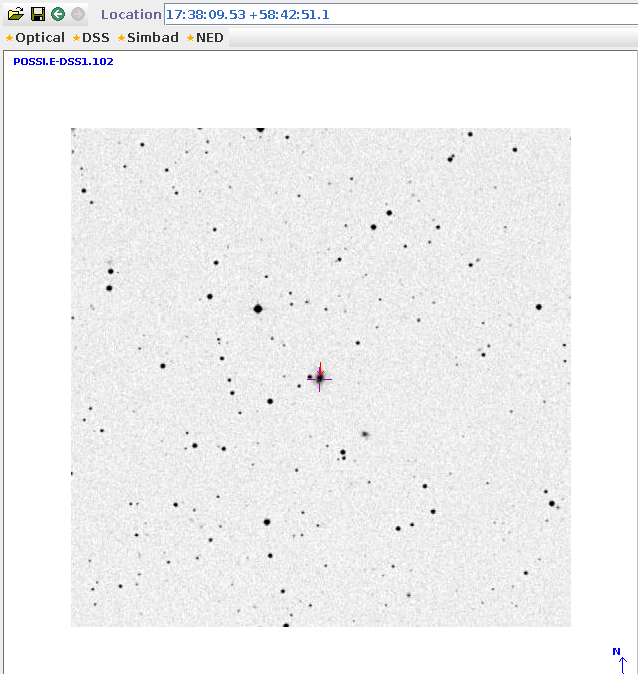
On the night of June 4/5, 2013, I observed the active galactic nucleus (AGN) NGC 6418 (for an ongoing research project on reverberation mapping) and the brand-new cataclysmic variable star PNV 19150199+0719471. I spent most of my time on the second object, which is in outburst now. I also ran a few tests with the "other" telescope, the 14-inch Celestron in our rolloff building.
The main setup was:
Notes from the night
First target, the AGN NGC 6418.
Target 1: NGC 6418. RA = 17:38:09.53 Dec = +58:42:51.

I took a series of twenty 120-second guided exposures, and discarded 5 which were slightly trailed. Below is a stacked median image, 15 x 120 seconds in V-band. The field of view is about 15 arcminutes across, with North up, East to the left. NGC 6418 is the slightly fuzzy object just to the right of a medium-bright star at upper right.
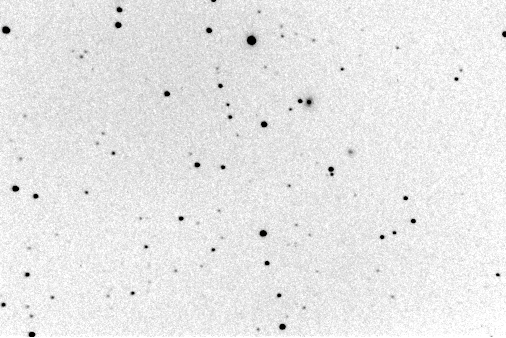
Target 2: the cataclysmic variable star known as PNV 19150199+0719471. Look at the web page for Jun 04 UT for information about it.
Here's a chart from the Digitized Sky Survey. The star labelled "B" is a known variable star, probably an eclipsing binary: see Bernhard and Lloyd, IBVS 4920, 1 (2000) .
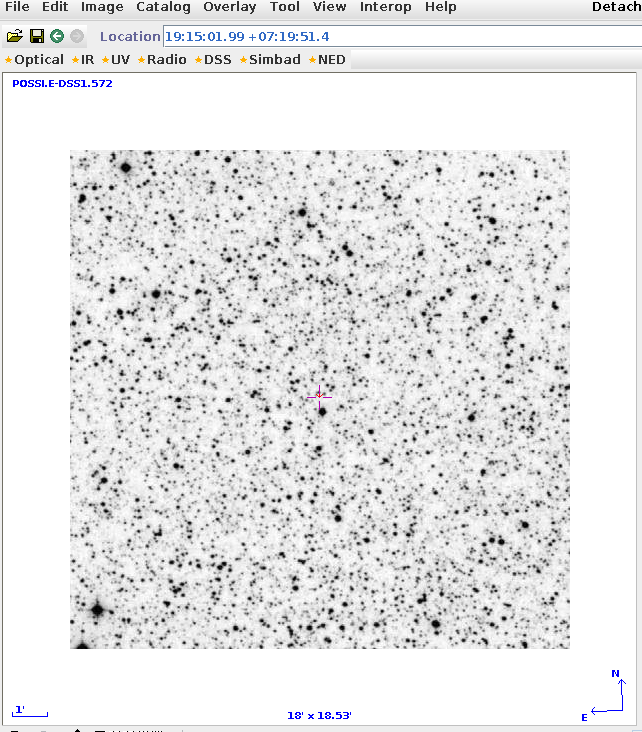
Putting the target object near the middle-top of the field, so that the two bright stars P and Q (HD 180219 and BD+06 4070) just peek into the southeastern corner of the field, yields a pretty good guide star. I took a set of 20-second guided exposures. I discarded about 30 of the images, leaving 136 good ones.
Below is one of my images from an earlier night.
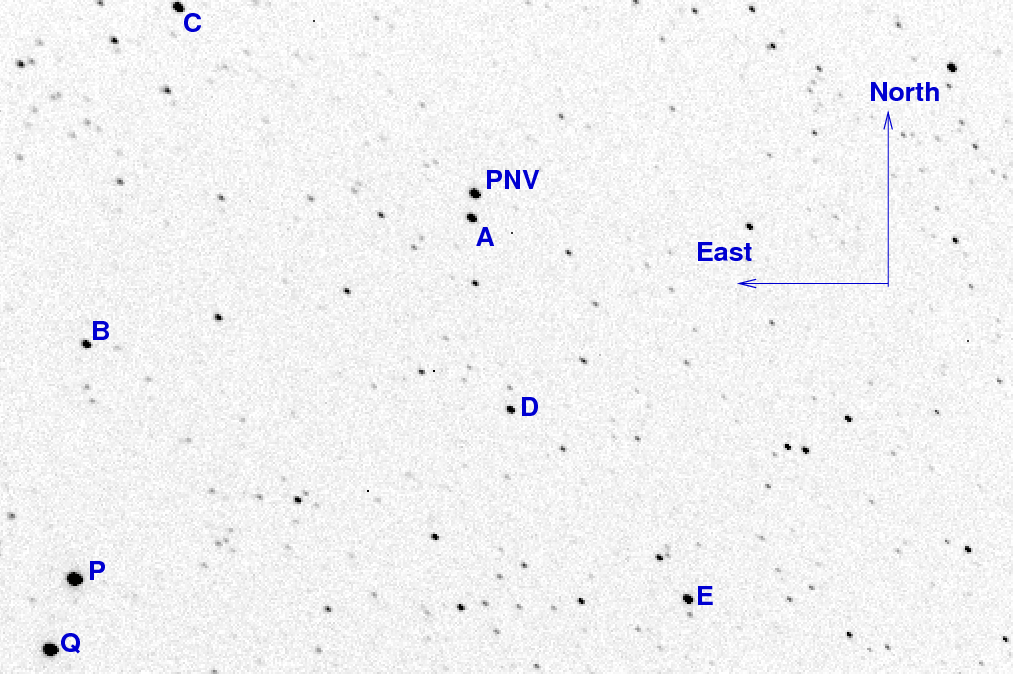
Using aperture photometry with a radius of 4 pixels (radius of 7.4 arcsec), I measured the instrumental magnitudes of a number of reference stars and the target. Following the procedures outlined by Kent Honeycutt's article on inhomogeneous ensemble photometry, I used all stars available in each image to define a reference frame, and measured each star against this frame. I used the UCAC4 V-band magnitude for star "E" to convert the ensemble instrumental magnitudes to the standard V-band scale.
The graph below shows the change in zeropoint from image to image. The steady decrease is the sign of a good night.
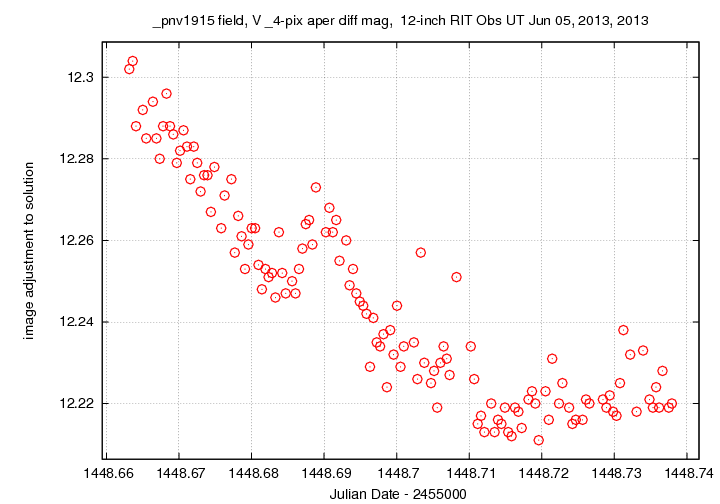
The scatter as a function of instrumental magnitude shows that the brightest unsaturated stars had a scatter of about 0.010 mag. The target, at instrumental magnitude 1.9, has a VERY slightly elevated scatter, compared to star "E" at instrumental magnitude 1.9. Note that star "B" did not have an eclipse during tonight's run, unlike last night, so it doesn't show up as a (major) outlier at instrumental mag 3.1.
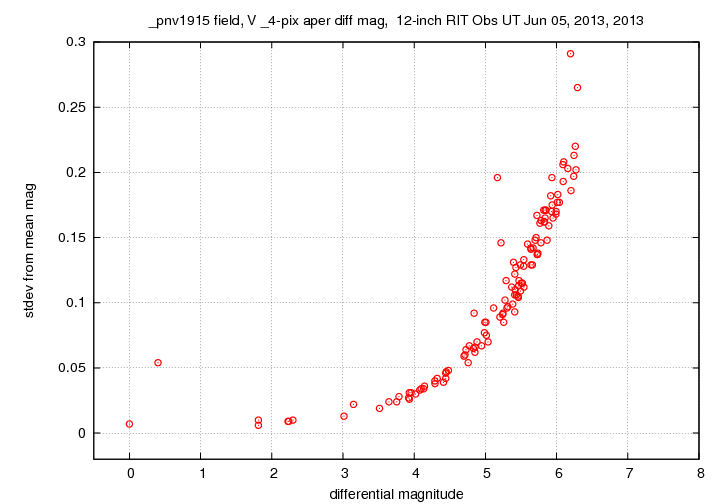
Here are light curves of the target star (green crosses) and some of the other stars in the field.
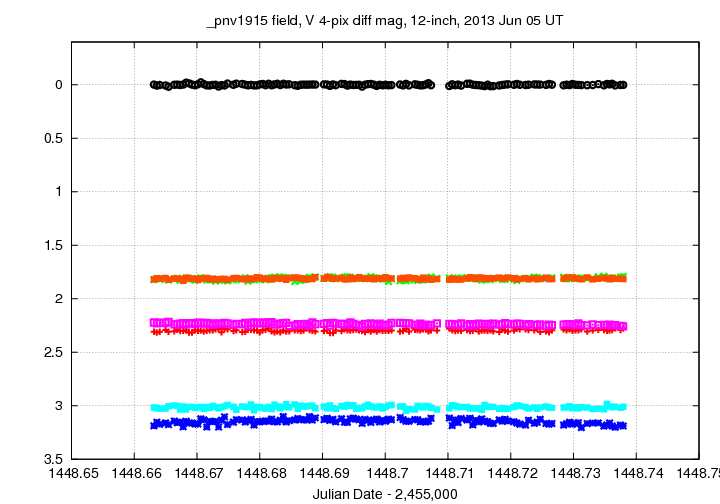
Here's a closeup of the target (green crosses) and a shifted version of star E (orange symbols).
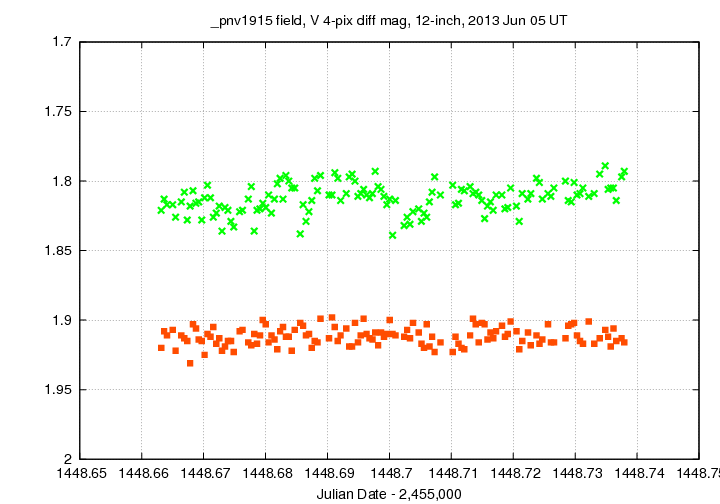
There _are_ some variations in PNV 1915, but their amplitude is only about +/- 0.02 mag, so they are just about swamped by the noise.
I sent a message to cba-data with the following report. This shows only the first few lines of measurements -- the full set can be retrieved using the link below.
# Measurements of PNV19150199+0719471 made at RIT Obs, Jun 5, 2010 UT, # in fair conditions, # by Michael Richmond, using 12-inch Meade and SBIG ST-8E CCD. # Exposures 20 seconds long, V filter. # Tabulated times are midexposure (FITS header time - half exposure length) # and accurate only to +/- 1 second (??). # 'mag' is a differential magnitude based on ensemble photometry # using a circular aperture of radius 7.4 arcseconds. # which has been shifted so UCAC4 487-093884 has mag=11.486 # which is its V-band magnitude according to UCAC4. # # UT_day JD HJD mag uncert Jun05.16315 2456448.66315 2456448.66723 11.495 0.007 Jun05.16361 2456448.66361 2456448.66769 11.487 0.008 Jun05.16407 2456448.66407 2456448.66815 11.491 0.008
I tried using the 14-inch telescope in the rolloff building under the control of our new copy of MaximDL. The software can control both the telescope mount and the camera (SBIG ST-9, with fixed V-band filter). At the moment, I haven't figured out how to control the focus motor via computer yet, but I'm working on it.
To test the orientation of the camera, I took pictures of Saturn. One example -- a 1-second V-band exposure -- is shown below. Saturn is very overexposed, but it is easy to see Titan (bright moon farthest to right), Rhea (fainter moon on right), Tethys (upper moon on left) and Enceladus (lower moon on left).
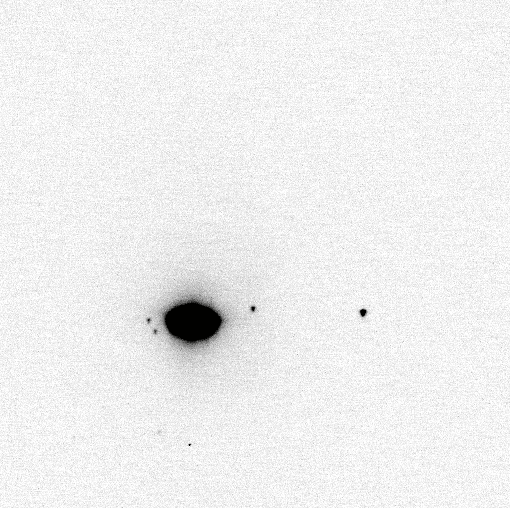
Checking against a chart of the satellites, I found that the camera was rotated by 180 degrees, so that this image show South up, East to right. I modified the camera's settings so that both horizontal and vertically orientations were flipped, and took another picture. This should show the standard North up, East left -- and it does. Compare to Stellarium's simulation.
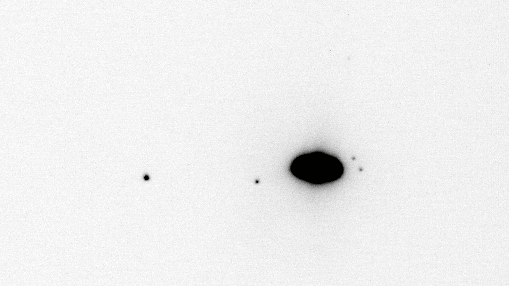
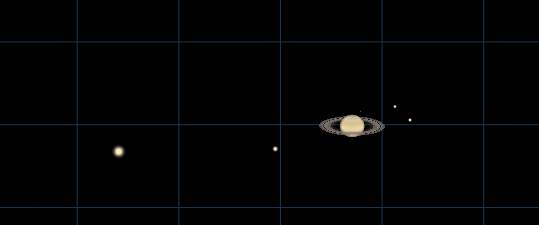
The 14-inch telescope plus ST-9 camera yields a plate scale of about 1 arcsec per pixel, which means that small objects like Saturn aren't sampled well. This closeup, based on a 0.2-second image, shows that the setup is going to be better for doing stellar photometry than taking pretty pictures of planets.
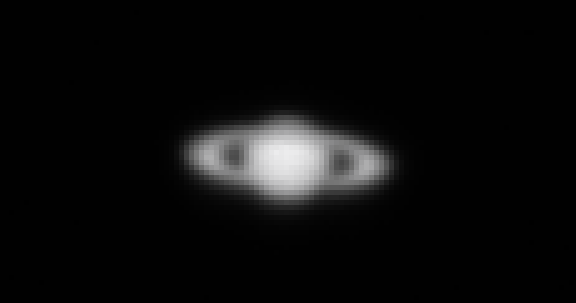
Last modified 06/05/2013 by MWR.